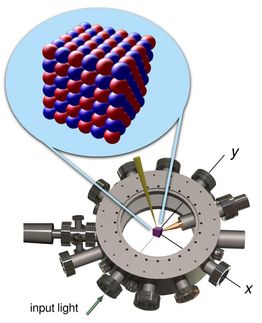Continuing the search for better energy materials
Throughout almost two decades of work with energy-related materials, Zhifeng Ren has received a number of grants from the Department of Energy (DOE). His latest DOE grant of $561,275 continues funding he has received for almost 20 years for work in basic energy science.
Ren, M.D. Anderson Chair Professor of Physics and principal investigator at the Texas Center for Superconductivity, will use the funding to continue his work with flexible transparent electrodes and thermoelectric materials. The research may lead to the discovery of another new material.
"That's always the driving force," he said. "You try to enhance the existing material's properties, and sometimes in that process you find something new."
Ren, who came to UH from Boston College in 2013, is recognized for his contributions in five scientific fields: carbon nanotubes, thermoelectrics, hierarchical zinc oxide nanowires, high temperature superconductivity and molecule delivery/sensing. He has received DOE basic energy science funding since 1998, helping to propel his progress in many of those fields.
The latest grant will be limited to specific projects, including an expansion of work on a stretchable and transparent electrical conductor Ren and his lab reported in 2014. The gold nanomesh electrodes provided good electrical conductivity as well as transparency and flexibility, offering promise for foldable electronics, such as a foldable cell phone or a flat-screen television that could be rolled up and carried.
Ren said the next step will be to study the strength and flexibility of the nanomesh once it is mounted on a substrate.
He also will continue work on high-performance bulk thermoelectric materials in an effort to find materials with a high power factor.
That effort will start with a magnesium-silver-antimony compound, capable of generating electricity from heat - via an industrial smokestack or a vehicle tailpipe, for example. Ren's group has reported that the material works well up to 300 degrees Centigrade, making it potentially valuable for clean energy and commercialization. The lab will continue efforts to reduce the electrical resistance of that material.
Last year Ren reported that his team had devised a new formula for calculating the maximum efficiency of thermoelectric materials, which will speed up the development of new materials suitable for practical use.
Most read news
Topics
Organizations
Other news from the department science

Get the chemical industry in your inbox
By submitting this form you agree that LUMITOS AG will send you the newsletter(s) selected above by email. Your data will not be passed on to third parties. Your data will be stored and processed in accordance with our data protection regulations. LUMITOS may contact you by email for the purpose of advertising or market and opinion surveys. You can revoke your consent at any time without giving reasons to LUMITOS AG, Ernst-Augustin-Str. 2, 12489 Berlin, Germany or by e-mail at revoke@lumitos.com with effect for the future. In addition, each email contains a link to unsubscribe from the corresponding newsletter.


























































